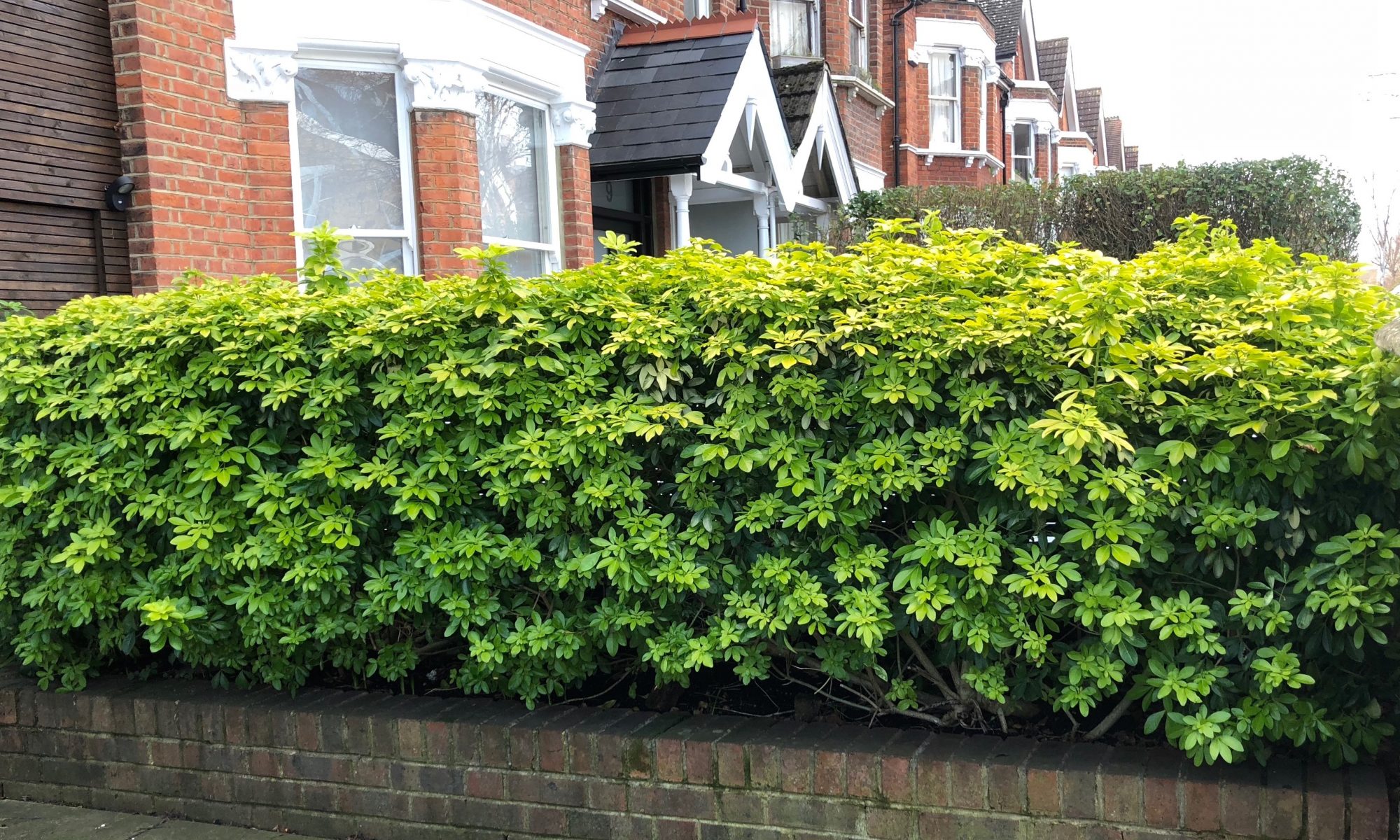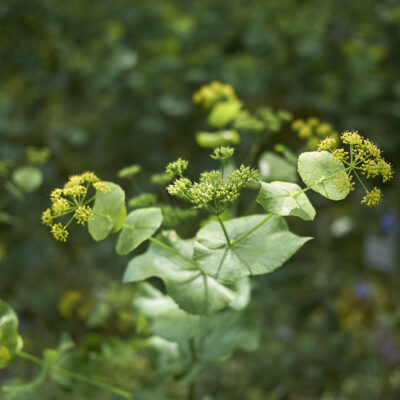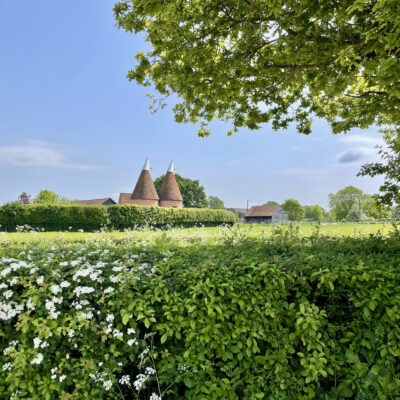Jo Arnell shares her recommendations for plants with year-round staying power
A herbaceous border in full swing at the height of summer is a wonder to behold, but come the autumn it does rather collapse into a heap of old sticks. This is fine if you have an enormous garden and can shut off part of it for the winter, and not be left to stare bleakly at the scene from the window, lamenting the end of days and pining for the colour to return. If only we could have some plants to enhance the view until the flowers come back in the spring. Actually, we probably do have a few, but not enough – and when you look at them with your interview face on, eyes narrowed, are they really up to the job? We need plants for structure, some for seasonal interest and some to be quietly companionable as the garden ebbs and flows through the year.
Where’s your backbone?
Structural plants are strong and reliable, lynchpins, carrying the border through the seasons and linking one part of the garden to another. The neighbouring plants will rely on them through thick and thin – as supports, as backdrops and as friends to lean on. They need not be evergreen, but should have some presence over the winter months. This can come in the simple form of stems and bark, or as complete and beautiful skeletons. I’m particularly fond of Cotoneaster horizontalis; its stiff herringbone stems will spread slowly up walls, or into arching mounds if gently encouraged and will reward you – and the birds and bees, with spring blossom and then berries and brilliant autumn colour. Many dogwood species that might look like dowdy nothings with their leaves on, reveal their glorious coloured bark once winter sets in and strips them bare.
“The house at Great Dixter often has a glorious display of cuddly conifers nestling by the porch in the autumn.”
Evergreen structure
Well behaved, tidy evergreens are great for low maintenance borders, acting as anchors and punctuation points. Some are naturally neat, but if you have time to keep them trimmed, small leaved shrubs like box will provide formal structure and a refined and soothing symmetry. Low growing Hebes fall into the naturally neat category, as would Pittosporum ‘Golfball’ and bigger evergreens like Choisya ternata; but beware of cramming in too many blobby round shapes; just as too many cooks can spoil a pudding, too many puddings stuff up a border (or something along those lines).
Viburnum davidii is a mid-border stalwart for a semi-shaded position, demurely handsome and saved from ‘puddingdom’ by its dark green, lance-shaped leaves. Mahonia is a striking evergreen with aggressive looking serrated foliage and spectacular, highly scented flowers that bloom in winter, like a spiky burst of sunshine.
Conifers have been much maligned, but are creeping back into fashion – and, despite what we hear, not all of them want to grow to be a hundred foot tall. There are all sorts of different shapes available that can provide interesting contrasts in texture and in foliage colour. Grow them in a border, or in containers – the house at Great Dixter often has a glorious display of cuddly conifers nestling by the porch in the autumn.
‘Treelets’ and sub-shrubs
A tree is generally considered to be a woody plant with a single stem, whereas a shrub has several and the leafy canopy is nearer the ground. We lump woody plants into categories, but some refuse to conform and teeter on the edges of the divides. At the boundary of trees and shrubs are what I think of as ‘treelets’, which often are arrived at through pruning – or the lack of. Some shrubs, if left unpruned, get delusions of grandeur and head for the skies, determined to become lofty trees. Many trees – silver birch, Amelanchier and Prunus serrula, for instance, are carefully pruned when young to have several stems, which shows off their lovely bark and keeps them a little lower than a single stemmed tree. Trees are adaptable to pruning – most hedge plants start life as sapling trees (Hawthorn, Beech, Yew, etc), but regular pruning turns them into neat bushes.
Treelets are often more elegant than shrubs, but take up less space than an actual tree, so they can be used to good effect in smaller gardens or large borders. Before you remove an unsightly or overgrown shrub, look at its legs – and see whether the canopy can be raised to produce the ‘treelet’ effect.
At the other end of the scale, there is a blurred line between leafy perennials and shrubs in a group of plants known as ‘sub-shrubs.’ These plants often have a partially woody framework, but are low growing and more perennial like in their habit – things like Perovskia (Russian Sage), Cistus and other grey-leaved Mediterranean evergreens. They can be a little lax in habit and benefit from a fairly hard prune (depending on how hardy they are and when they flower) in spring to set them back on the right track.
“There is a blurred line between leafy perennials and shrubs in a group of plants known as ‘sub-shrubs.’ These plants often have a partially woody framework, but are low growing and more perennial like in their habit.”
Winter wonders
Evergreens are an obvious choice for winter interest, but surprisingly there are quite a few deciduous trees and shrubs to choose from, displaying either decorative bark, berries or even flowers. The bonus of winter flowers is that they’re usually scented. Good deciduous winter shrubs include: Viburnum bodnantense ‘Dawn’, Chimonanthes praecox (Winter sweet), Lonicera fragrantissima, Hamamellis (witch hazel).The RHS garden Wisley in Surrey – open all year (except Christmas day) is a great place to visit for out of season inspiration. They have a wonderful winter walk (near to the tea room – essential part of any winter walk), where you can experience the joys of winter plants all in one place.
It’s hard to play a supporting role; outshone by the flowery divas in the summer, propping up lax companions and generally being taken for granted, but when the fair-weather plants have given up and gone to ground, these unsung plants can finally have their moment in the sun (or shade). Reliable, stalwart and quietly beautiful, well chosen structural shrubs will be an investment – and this is the perfect time to plant them – or plant some more.
5 good structural plants
Evergreens provide a constant look and will ensure that the border looks good through the seasons, even in the depths of winter, but there are deciduous plants that look just as good naked…
Box – this is excellent for adding formality and evergreen interest. Create low hedges, topiary shapes and focal points – however, beware box blight and box tree caterpillar, which is now rife in London and surrounding areas.
Euphorbia ‘Wolfennii’ – an architectural plant with handsome,grey/green foliage in winter and long lasting lime green bracts in spring.
Miscanthus sinensis– a tall grass with attractive seedbeds that will persist all through the winter. Grosses are a good alternative to ‘blobby’ shrubs and bring movement to a border.
Osmanthus – small leaved evergreen with tiny scented flowers in spring. It can be trimmed to a neat shape to make a dark backdrop for other plants.
Cornus alba ‘Elegantissima’ – this dogwood has pretty variegated foliage, good autumn colour and once the leaves have fallen, dark red stems on the young growth all through winter.
Join Jo in her garden in Woodchurch for gardening courses starting in March 2020
01233 861149 hornbrookmanor.co.uk
TEST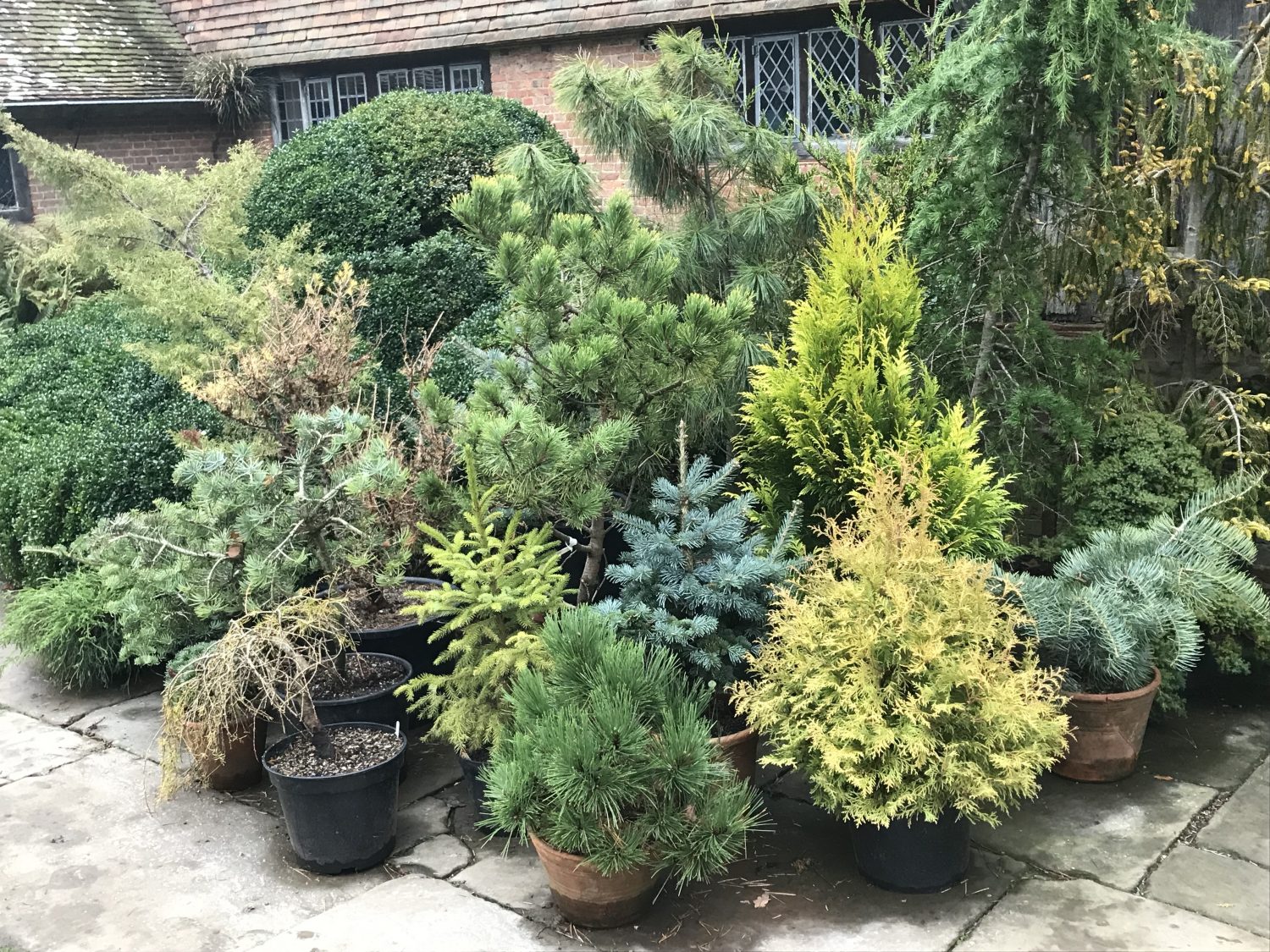
Conifers in containers at Great Dixter
TEST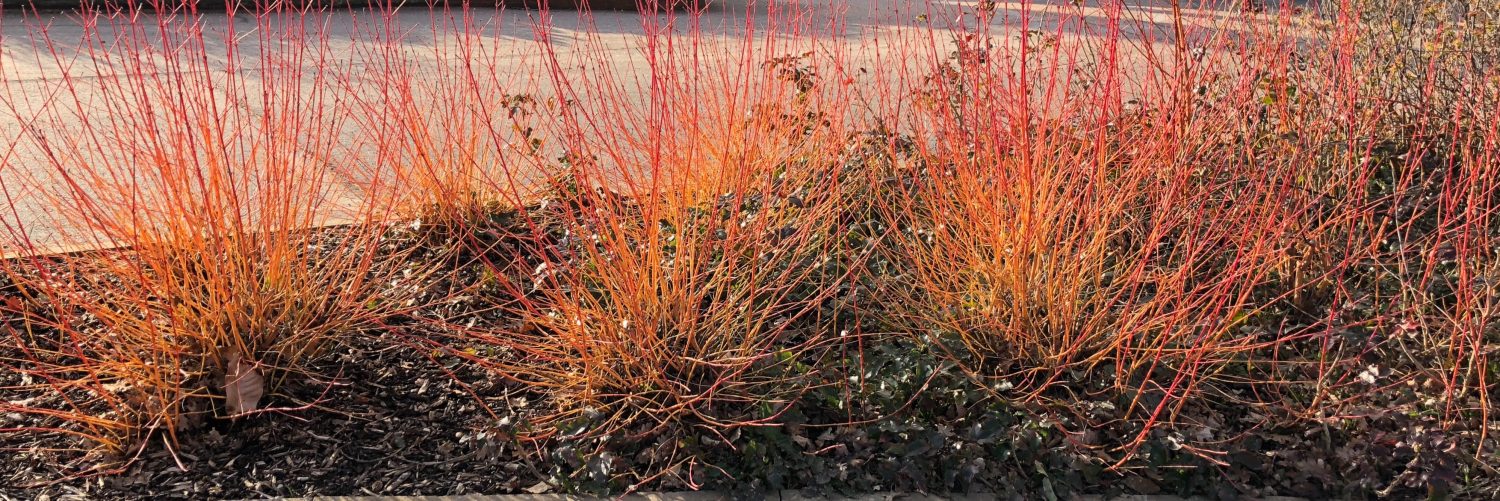
Cornus sanguinea ‘Midwinter Fire’
TEST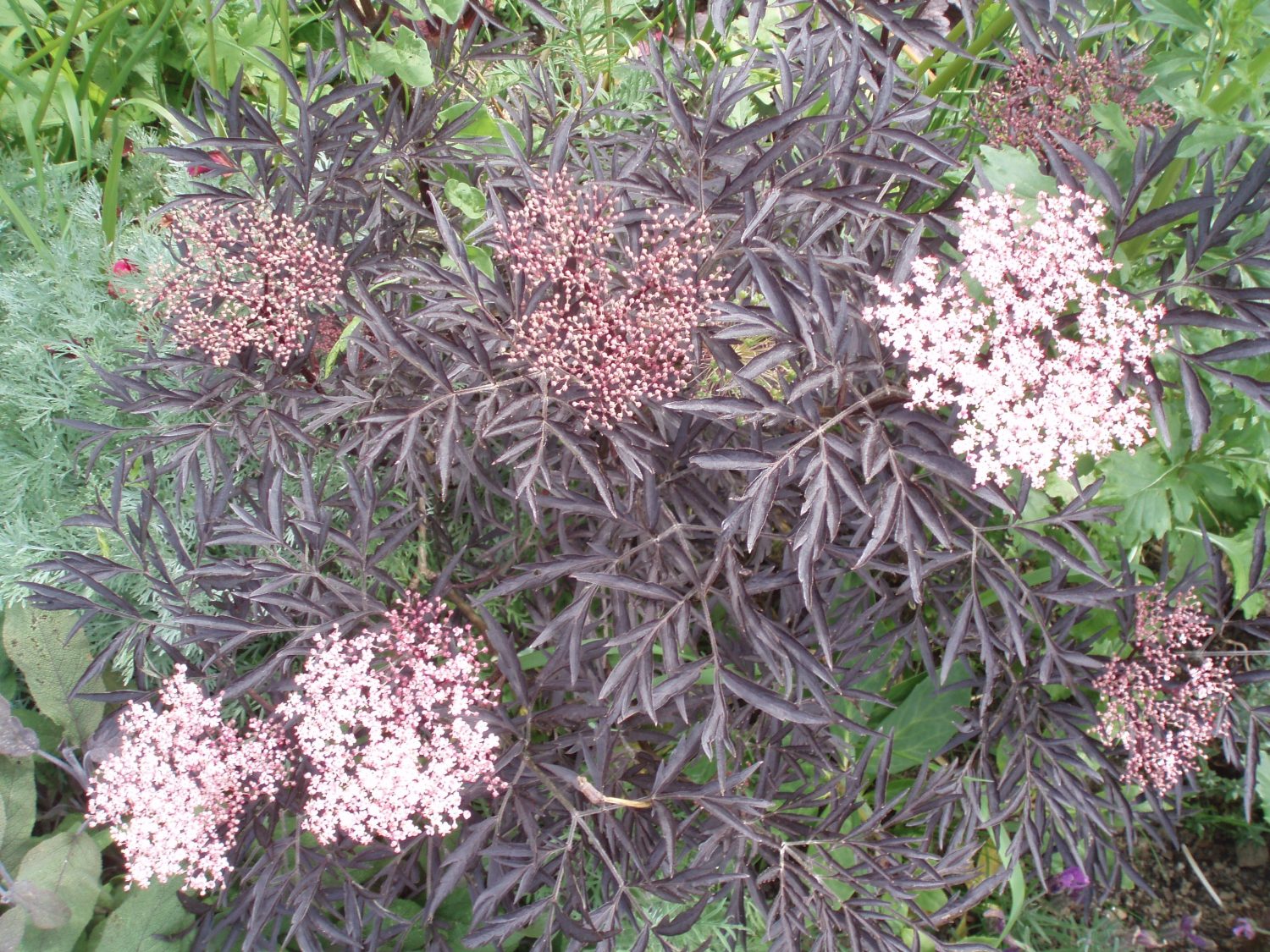
Sambucus nigra
TEST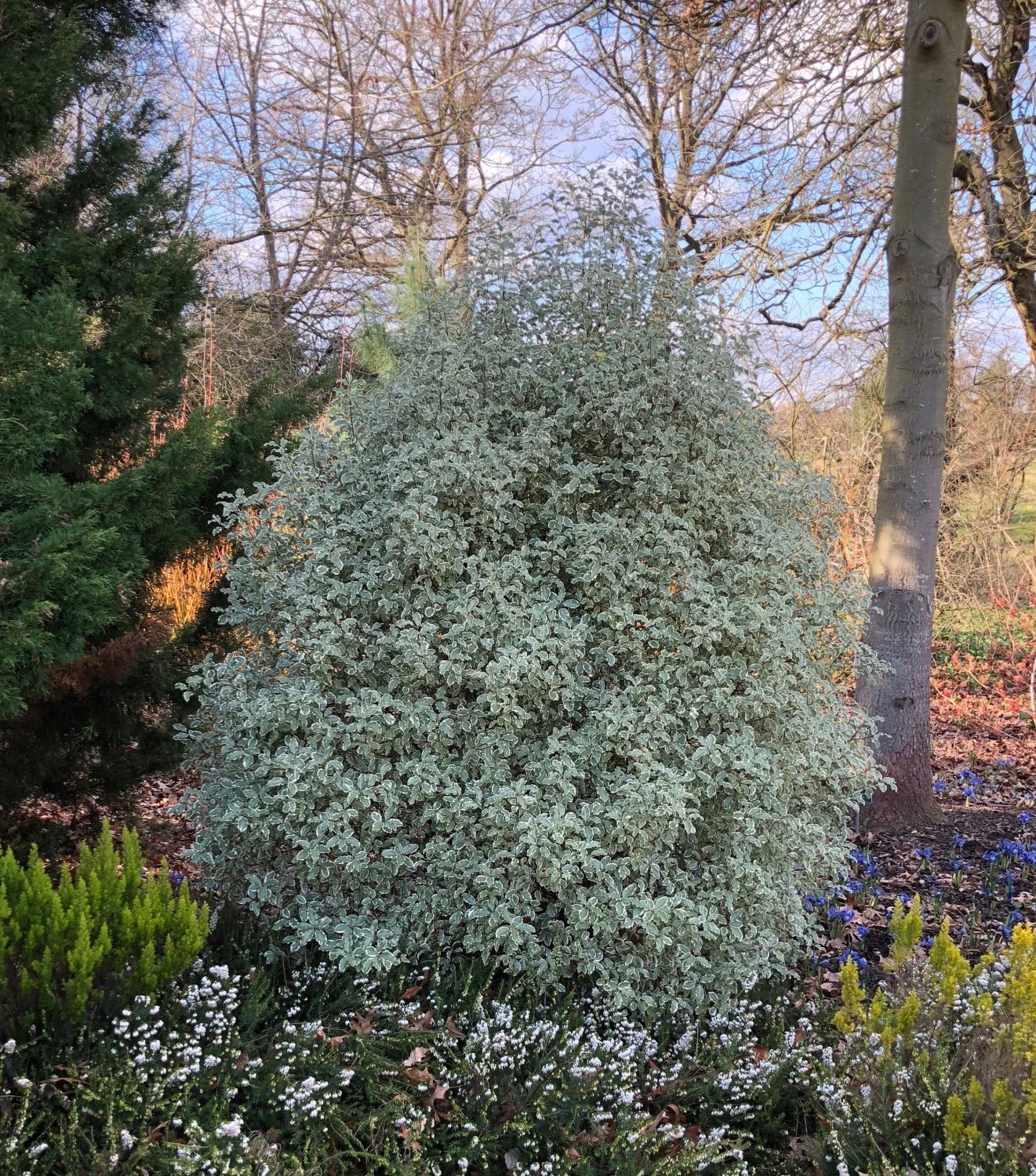
Pittosporum
TEST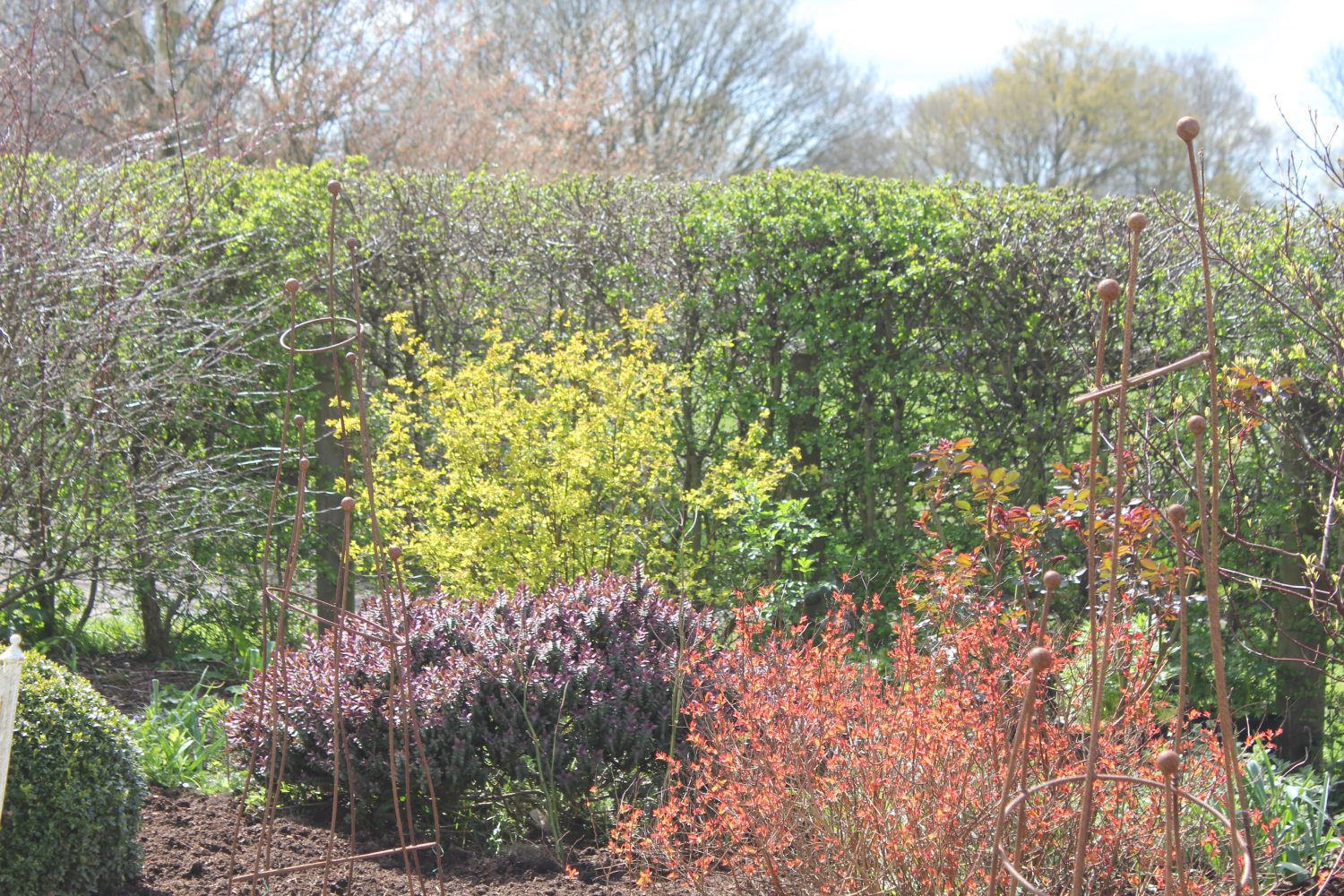
Spring foliage colour
TEST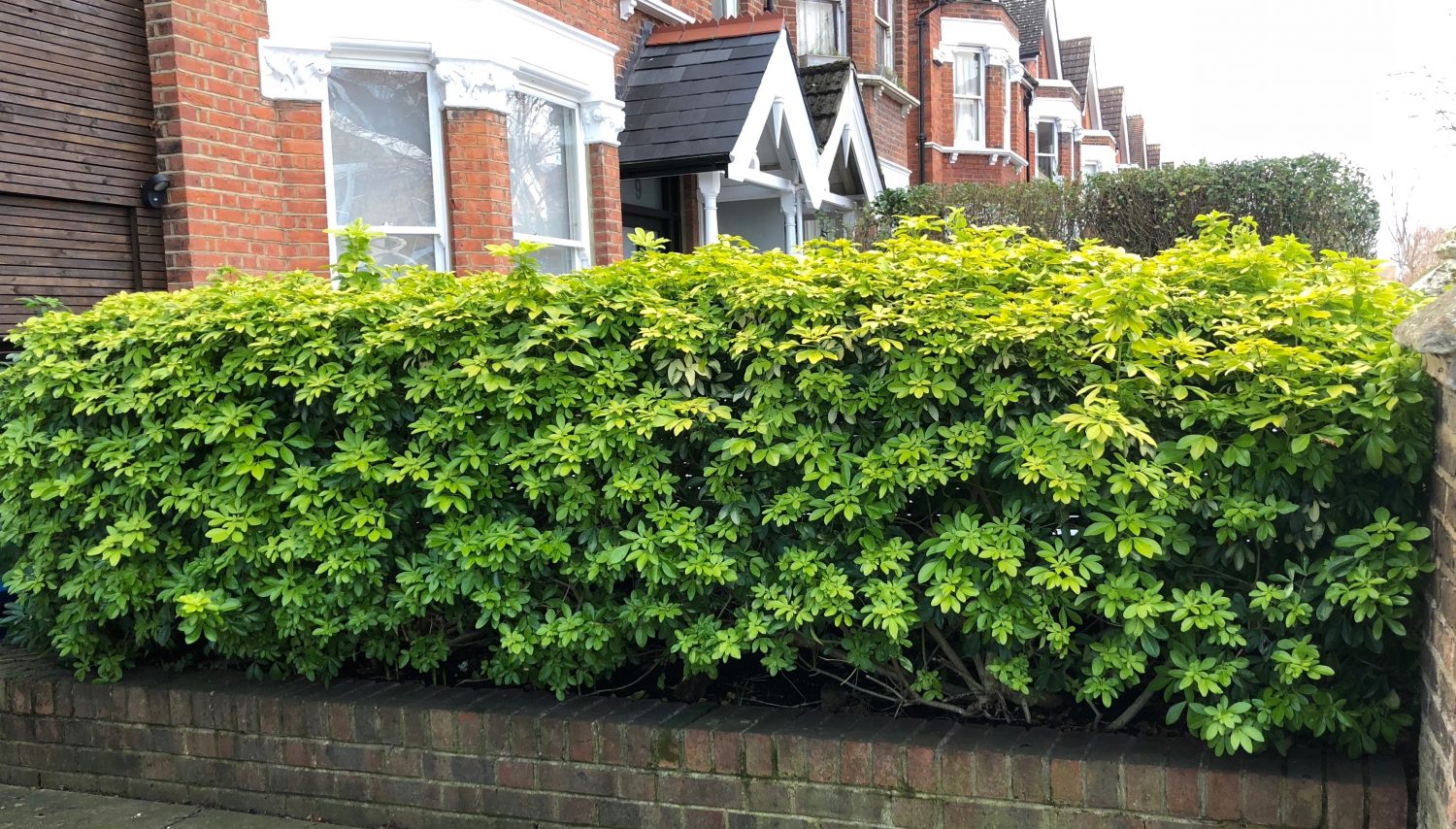
Choisya ternata ‘Sundance’ as a hedge
TEST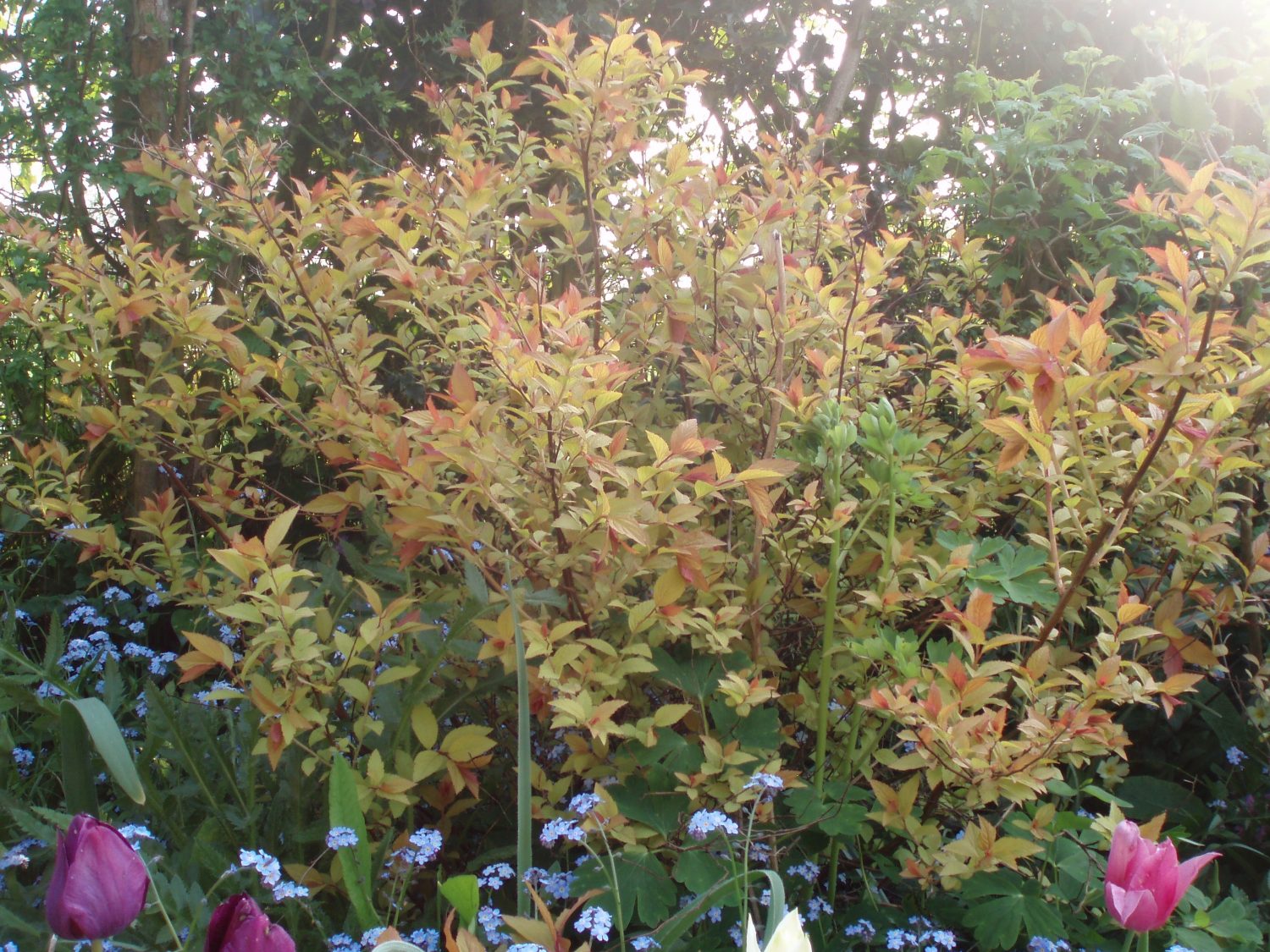
Spiraea ‘Goldflame’
You may also like
Go with the Flow
Sue Whigham shares some valuable new-to-gardening advice I’m sure that by now we should be used to the rain but I’m not entirely sure that we are. We had a dry, sunny day the other day and how everybody’s mood...
Farm Fables
Jane Howard gets to the bottom of why so many ponds have disappeared across the High Weald I have a new passion, almost an obsession, it’s about ponds. And there’s a distinct possibility I might become a bit of a...
Hedge Issues
Sue Whigham takes a meander along nature’s verdant and vital corridors Recently the BBC’s Today programme carried a feature about England’s hedgerows which created a lot of interest among listeners. On the strength of that, Martha Kearney interviewed one of...
